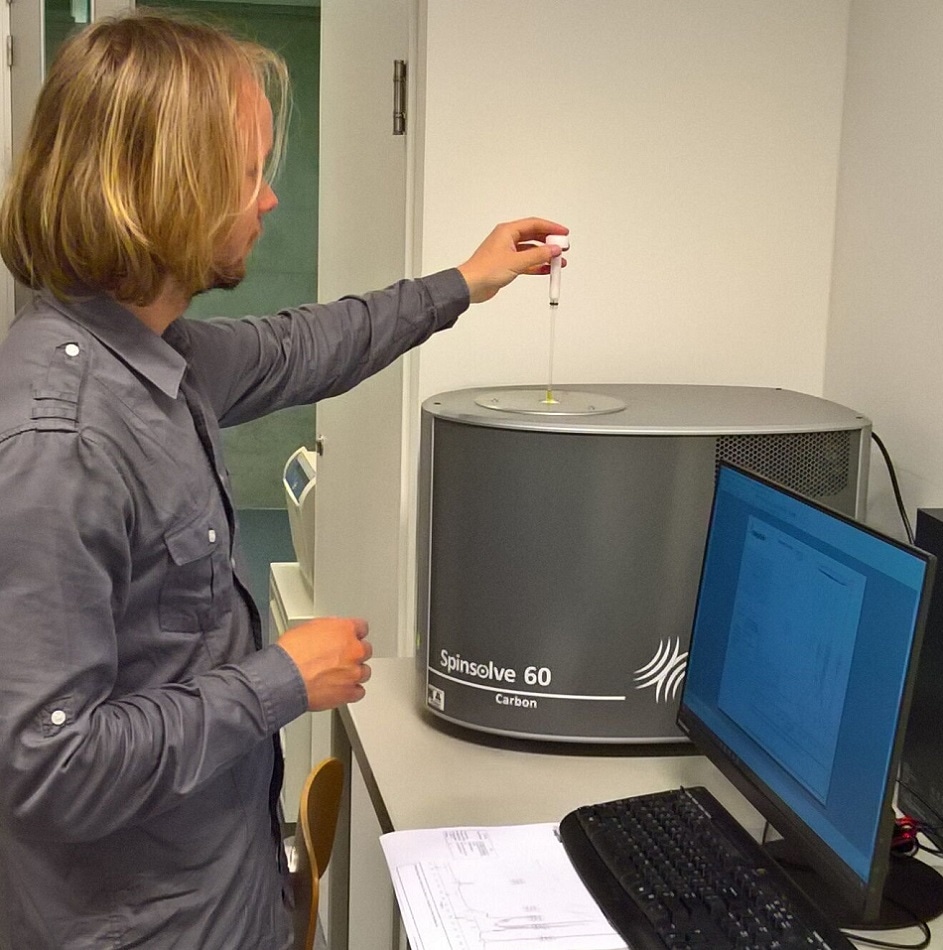
Image Credits: Magritek
Magritek, a leading provider of compact NMR and MRI instruments, reports how their 60 MHz benchtop NMR spectrometer is being used to teach undergraduate Biotechnology and Molecular Life Sciences students from Wageningen University about the practical use of NMR as part of the spectroscopic and chromatographic introductory course “Analytical Methods in Organic Chemistry”.
Wageningen University & Research (WUR) is formed from the collaboration between Wageningen University and the Wageningen Research foundation. With the mission “to explore the potential of nature to improve the quality of life,” its staff and students work in the domain of healthy foods and living environments. Dr Teris van Beek is a Lecturer in the Department of Agrotechnology & Food Sciences. Among his responsibilities is the coordination of the undergraduate course in analytical chemistry where 220 molecular life sciences and biotechnology students are introduced to practical spectroscopy each year (UV, IR, MS, NMR, structure elucidation).
Students are taught the basics of NMR and in small groups work one afternoon with the Magritek 60 MHz NMR. They analyse the alcohol content of various liquors (quantitative NMR). In the same course, students also isolate some products (anethol, piperine, xanthorrhizol) and can then measure their own product to evaluate the identity and purity. In addition to the 60 MHz spectra, 400 MHz spectra are handed out. Immediately after this course, there is an organic synthesis course where students synthesize products. Again afterwards, they assess how successful their synthesis was. So they apply the knowledge acquired earlier.
In the 45 years before the acquisition of the Magritek, we used our research NMR (60 → 90 → 200 → 300 → 400 MHz) for teaching purposes. However since our move to a new lab and the sharp increase in the number of students, this has become logistically impossible. However we did not wish to lose the hands-on aspect and we like students to measure their own products. Therefore, we had to find an affordable alternative solution, i.e., an instrument with a low-field permanent magnet. Although the field strength poses a problem (we can no longer use certain compounds as the spectra are too complicated at 60 MHz), we chose 60 MHz. We tested four different table top low-field NMR instruments, and the Magritek came out best in terms of line width, sensitivity and ease of operation. The price was in the same range as the other instruments so we bought the Magritek. The Magritek also allows for all 2-dimensional (2D) NMR spectra but so far we have not used this option as the introductory course does not deal with 2D NMR. However it is possible, that we will use this option in one of the more advanced NMR courses.
Dr van Beek, Lecturer, Department of Agrotechnology & Food Sciences, Wageningen University
Magritek’s Spinsolve benchtop NMR spectrometers are supplied worldwide to academics in teaching and research; also to industry for research and reaction monitoring through to quality control use. To obtain full details of the Spinsolve benchtop NMR spectrometer and the full range of analytical products from Magritek, visit, www.magritek.com.